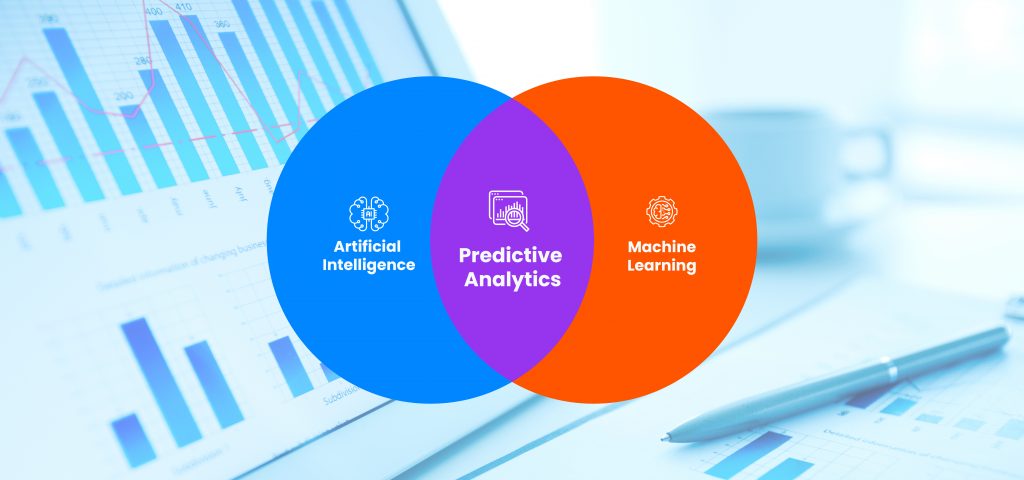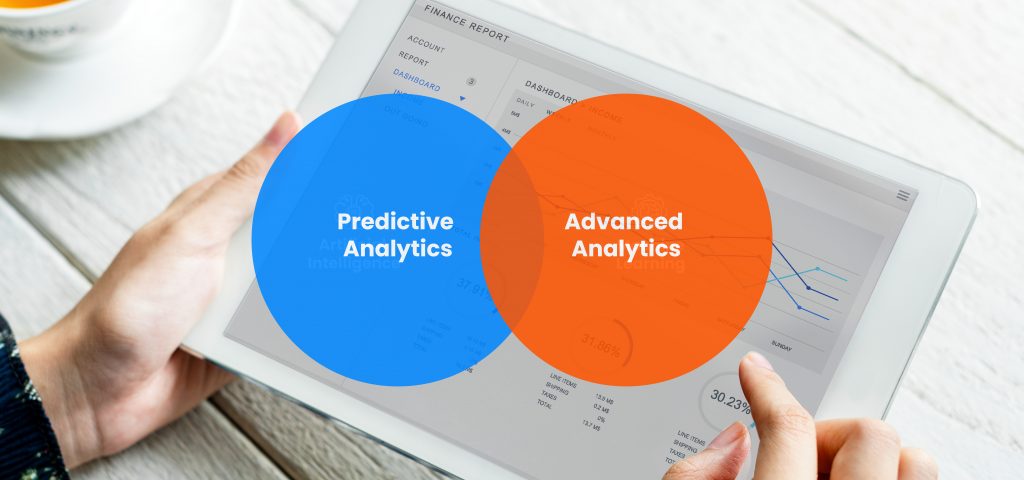In today’s business landscape where organizations can amass vast amounts of data, the significance of data science in shaping decision-making processes has increased. Leveraging the benefits of advanced algorithms and statistical modeling techniques, data science has been pivotal in extracting valuable insights and predicting future outcomes from data.
At the core of data science lies predictive analytics, a vital tool for transforming raw data into actionable intelligence. By analyzing historical data with statistical models, predictive analytics can help identify trends and forecast future scenarios for organizations to optimize various aspects of their operations.
Data science forms the basis for predictive analytics by offering the necessary tools and approaches to gather, refine, convert, and examine data. By applying statistical models and Machine Learning (ML) algorithms, data scientists can unlock hidden patterns and relationships within the data, enabling accurate predictions and insights.
As data science continues to advance and predictive analytics becomes more sophisticated, the impact on business decision-making is poised to expand further, revolutionizing how organizations operate in an increasingly data-driven world.
This article discusses the revolutionary potential of predictive analytics and data science, exploring how they reshape business decision-making processes in today’s dynamic landscape.
The Evolution of Data Science and Predictive Analytics
The evolution of data science has been a fascinating journey, transforming the way we understand and utilize data in the modern era. The roots of data science can be traced back to the early 20th century when statisticians began using statistical methods to analyze data. However, it wasn’t until the advent of computer technology and the exponential growth of digital data that data science truly took off.
With the significant advancements in computation and the abundance of available data, data scientists started integrating various disciplines such as mathematics, statistics, computer science, and domain knowledge to tackle complex data problems. Additionally, the rise of big data propelled the development of advanced techniques and tools in data science further.
Today, data science plays a crucial role in unlocking valuable insights from vast amounts of data. It involves processes such as data collection, cleaning, transformation, and analysis, enabling organizations to make informed decisions and drive innovation. With advancements in technology, including cloud computing and Artificial Intelligence (AI), data science continues to evolve, offering new opportunities and challenges.
The Rising Popularity of Predictive Analytics Across Verticals
The adoption of predictive analytics has been on the rise, revolutionizing industries across the board. According to a survey by Forbes, 86% of executives believe that predictive analytics has contributed significantly to their organizations’ success. The retail sector has experienced substantial benefits, with predictive analytics helping companies optimize pricing strategies, improve inventory management, and personalize customer experiences.
In finance, predictive analytics has become indispensable, enabling banks to detect fraud, predict market trends, and mitigate risks. Healthcare organizations are leveraging predictive analytics to enhance patient care, identify at-risk populations, and improve treatment outcomes.
The impact of predictive analytics is also evident in manufacturing, where it facilitates predictive maintenance, optimizes machinery performance, and reduces downtime. In marketing, predictive analytics empowers companies to target customers effectively, customize marketing campaigns, and maximize return on investment.
These examples highlight the increasing adoption and effectiveness of predictive analytics in various industries. As organizations continue to embrace data-driven decision-making, predictive analytics will play an even more significant role in shaping strategies, optimizing operations, and driving competitive advantage.
The Key Components of Predictive Analytics
Predictive analytics comprises many components that work together to extract valuable insights from data, which are then used to make accurate predictions. Here is a summary of the key components of predictive analytics.
1. Data Collection: The first step in predictive analytics is collecting relevant data. This stage involves identifying data sources, gathering data from these sources, and ensuring that the data is complete. It is important to note that the data collected should encompass the necessary variables and features to build robust predictive models.
2. Data Pre-processing: Once the data is collected, it needs to be pre-processed to enhance its quality for analysis. This stage involves tasks such as data cleaning, handling missing values, and transforming data into a consistent format. Pre-processing is done to ensure that the data is well prepared for modeling and analysis.
3. Modeling: Modeling involves choosing appropriate statistical or machine learning techniques to build predictive models. These models learn from historical data patterns and relationships to make predictions on new or unseen data. Common modeling techniques include regression analysis, decision trees, random forests, support vector machines, and neural networks.
4. Evaluation: The performance of predictive models needs to be evaluated to assess their accuracy and effectiveness. Evaluation metrics such as accuracy, precision, recall, and area under the curve (AUC) are used to measure the model’s performance. This step helps determine the reliability and robustness of the predictive models and identify areas for improvement.
In addition to these technical components, domain expertise, and contextual understanding are essential in predictive analytics. Subject matter experts with deep domain knowledge provide insights into the data, guide feature selection, interpret the model’s outputs, and ensure that the predictions align with the specific industry or business context. Their expertise helps refine the models, validate predictions, and make informed decisions based on the forecasts.
The Impact of Predictive Analytics on Business Decision-Making
Predictive analytics has a wide-ranging impact on organizations, with three core effects observed across various industries.
1. Improved Operational Efficiency
Operational efficiency has been found to have significantly improved through predictive analytics. By analyzing historical data and identifying patterns, businesses can optimize their inventory levels, anticipate demand fluctuations, and streamline their supply chain processes. As a result, companies can reduce costs, enhance resource allocation, and increase productivity.
2. Promotes Customer-Centric Decisions
Predictive analytics enables businesses to gain a deep understanding of customer preferences, behavior, and needs. Consequently, this data can support personalized marketing campaigns, precise product recommendations, and enhanced customer experiences.
3. Risk Mitigation
Predictive analytics helps businesses in risk mitigation. By analyzing historical data, companies can identify potential risks and enable measures to prevent them. Additionally, predictive analytics can help in fraud detection, credit risk assessment, and threat identification across sectors such as finance, insurance, and cybersecurity.
In short, embracing predictive analytics gives organizations a competitive edge in the dynamic landscape of data-driven business decision-making.
Future Trends and Opportunities in Predictive Analytics
The field of predictive analytics is continuously evolving, fueled by technological advancements and the increasing accessibility of data. It is growing at such a breakneck speed that several emerging opportunities have the potential to reshape the field and unlock new possibilities for businesses.

AI and ML algorithms can process vast amounts of data, learn from patterns, and make accurate predictions. This integration allows for the creation of more sophisticated and precise predictive models, leading to improved decision-making and enhanced business outcomes.

Another trend in predictive analytics is the integration of predictive analytics with other advanced analytics techniques. By combining predictive analytics with techniques such as prescriptive analytics and diagnostic analytics, organizations can gain a comprehensive understanding of their data and unlock deeper insights.
Predictive analytics also plays a big role in driving innovation and providing a competitive advantage. By leveraging predictive analytics, businesses can identify emerging trends, anticipate market shifts, and make proactive strategic decisions. As a result, organizations can use these tools to stay ahead of the competition; identify untapped opportunities; and innovate their products, services, and business processes.
Furthermore, the increasing availability of data sources, such as IoT devices, social media, and customer behavior, has created new opportunities for predictive analytics. By harnessing this data and applying advanced analytics techniques, organizations can gain deeper customer insights, improve personalization, and deliver targeted experiences.
Embracing the Power of Predictive Analytics
Considering the significant impact of predictive analytics, organizations are encouraged to embrace data science and incorporate predictive analytics into their decision-making processes. By investing in data science capabilities and fostering a data-driven culture, businesses can harness the power of predictive analytics to make more accurate predictions. In short, predictive analytics can help businesses stay ahead of the competition, identify emerging opportunities, and make strategic decisions based on data-driven insights.
